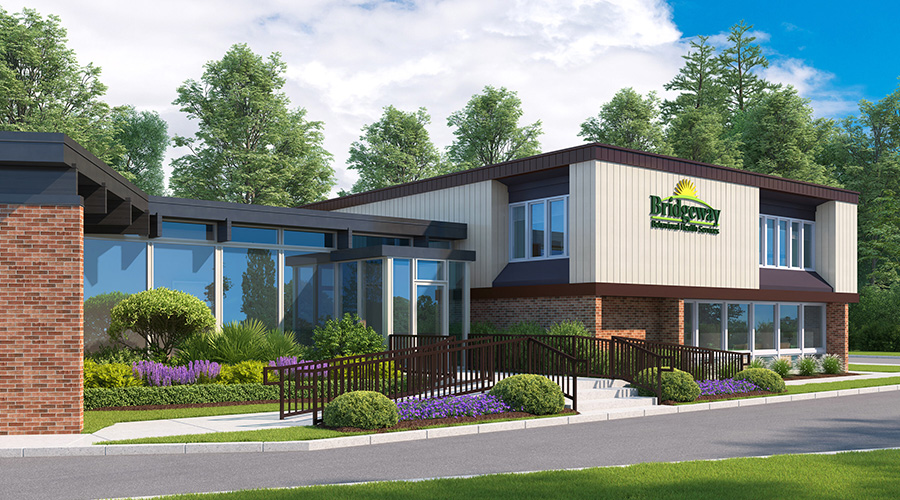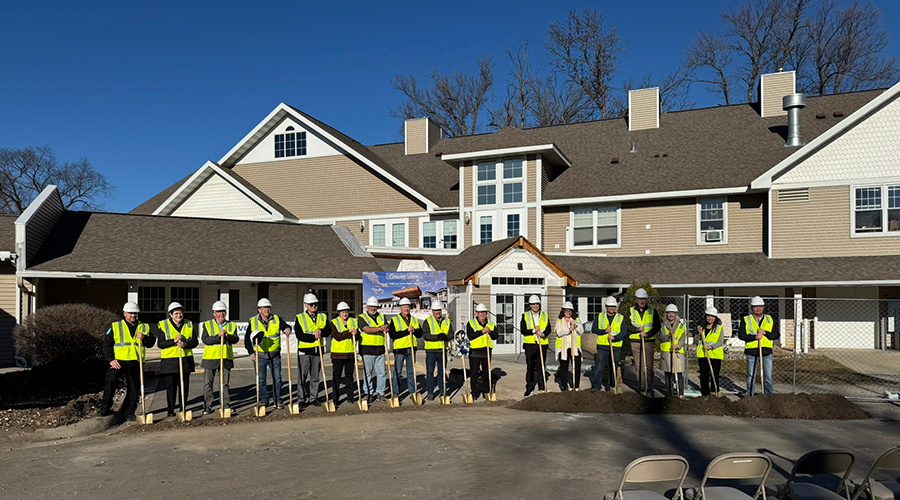In the shadow of gleaming skyscrapers, a humanitarian crisis is unfolding on city streets across the United States. A combination of rising housing costs, addiction issues and a lack of behavioral health programs and services for those suffering from mental illness have resulted in tent-lined sidewalks, encampments beneath overpasses and emergency rooms acting as de facto housing for too many Americans.
The moral and financial stakes are staggering, and while the relationship between homelessness and behavioral health is well documented, delivering supportive housing for the homeless remains a major financial and logistical challenge for developers and city leaders alike.
Chronically unhoused individuals can surpass $120,000 annually in hospital bills, compared to $18,000 for those with stable housing. Housing patients can reduce Medicaid costs by as much as 43 percent, and the mental health challenges among unhoused individuals require environments that support more than just shelter.
No single solution exists for this massive societal problem, but creating more permanent supportive housing and enabling the developers who deliver these spaces to do so quickly and efficiently once financing is secured is critically important. After all, the faster these facilities are built, the faster unhoused folks will have the tools, space and medical attention they need to achieve recovery and independence.
Strategic project management in the creation of behavioral health facilities can help transform well-meaning plans into tangible, lasting change. Consider the development of Weingart Towers, California's largest permanent supportive housing development located in Los Angeles’ Skid Row, where stakeholders were guided through every phase of the project, from predevelopment through occupancy.
Project management in supportive housing
Permanent supportive housing and behavioral health facilities are uniquely complex. Bringing public agencies, private developers and service providers onto the same page first thing is critical to making real progress. When they coordinate early, developers can deliver better results more quickly and fairly.
These projects often involve a mix of city, state, federal and philanthropic funding, and each has its own technical and compliance requirements. Navigating these layers calls for what professionals refer to as de-conflicting — ensuring one funding source’s demands do not contradict another source’s demands. Add to this the pressure of multiple overlapping timelines, rapidly evolving policies and an intricate capital stack of financing sources.
When implemented correctly, disciplined project management can accelerate progress by keeping stakeholders aligned, anticipating regulatory shifts and sequencing critical tasks to avoid costly delays.
Equally important is the human side of delivery. Many nonprofit developers enter these projects with strong missions but limited experience in navigating entitlement processes or managing consultants and contractors. On Weingart Towers, for example, project management teams were essentially the strategic quarterback for the development. All parties stayed aligned and executed in a coordinated fashion to ensure the mission-driven goals translated into supportive housing that met the community’s needs.
Designing with purpose
With nearly 400 units and extensive on-site behavioral health services, Weingart Towers provides affordable and permanent housing for people experiencing homelessness.
Owner representatives and project managers worked together with the owner, the developer, the architect and the city of Los Angeles to coordinate over a dozen funding sources and navigate overlapping compliance requirements. The connection between public agencies and nonprofit leadership helped ensure expectations stayed realistic and aligned.
One critical factor in this project’s success was mapping all the stakeholders and the funding stack early to identify key players and help avoid delays and surprises. The earlier project managers are engaged, the more effectively they can guide nonprofit developers through complex requirements, protecting mission alignment from day one.
The work also was strategically sequenced in packages that provided clear direction for contractors, as behavioral health projects often aim for near-total compliance with the Americans with Disabilities Act, where even minor discrepancies, such as a sink height off by 1/8 of an inch, can cause inspection failures. Such details not only reflect a broader commitment to equity and inclusion but also underline the crucial medical care — both mental and physical — often administered in these facilities.
Great care was taken to consider trauma-informed design tactics, including natural light, calming color palettes, wood textures and open layouts to help residents regulate circadian rhythms, reduce anxiety and feel safe. Other trauma-informed design considerations include avoiding hidden or enclosed spaces in common areas that could trigger trauma responses and providing features such as aromatherapy or nature-inspired materials to offer subtle yet meaningful support.
Building in Skid Row demanded adaptations for public scrutiny, intensive inspections and construction activities that considered residents’ mental health and histories. Involving all parties helped to create an environment that fosters healing, dignity and stability for residents, including integrated wraparound services to help empower them for the future. On-site access to medical and mental healthcare, job training rooms, case management and wellness amenities such as fitness areas, computer labs and gardens help residents regain independence and rebuild their lives.
Scaling smarter, faster, fairer
Addressing homelessness is a massive challenge, but it does not have to be an insurmountable one. Progress depends on aligning public agencies, private developers and behavioral healthcare service providers around shared goals and streamlined execution. When these efforts are coordinated from the outset, communities can build smarter, faster and more equitably.
Project managers can make that possible. They connect vision to reality, align timelines and teams and ensure each building does more than house. It heals. The result of Weingart Towers reinforces that success in permanent supportive housing is about aligning to the needs of the community. With the right leadership, lasting spaces are created that restore stability, dignity and the possibility of a new beginning — one project at a time.
Sonnet Hui is vice president and managing director of the Los Angeles office of Project Management Advisors.

 Healthcare Is the New Retail
Healthcare Is the New Retail Bridgeway Behavioral Health Services Launches Campaign to Renovate Health Center
Bridgeway Behavioral Health Services Launches Campaign to Renovate Health Center Ground Broken for New North Dakota State Hospital
Ground Broken for New North Dakota State Hospital AI Usage for Healthcare Facilities
AI Usage for Healthcare Facilities Ground Broken on Pelican Valley Senior Living Modernization Project
Ground Broken on Pelican Valley Senior Living Modernization Project